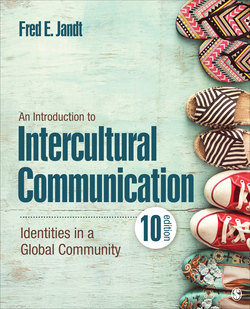Читать книгу An Introduction to Intercultural Communication - Fred E. Jandt - Страница 91
На сайте Литреса книга снята с продажи.
Case Study: The Roma
ОглавлениеThe Roma are believed to have migrated from India more than a millennium ago, first settling in Persia, then arriving in Europe in the 13th or 14th century. The name Gypsy was mistakenly applied by medieval Europeans, who thought all dark-skinned people came from Egypt. Leading a nomadic life, the Roma were often regarded as tramps and accused of thefts and robberies. From the beginning of the 17th century, attempts were made to forcibly assimilate the Roma people by requiring permanent settlement and banning the Romany language. The Roma were particularly persecuted by Nazi Germany. About 500,000 died in Nazi gas chambers and concentration camps. The Roma language and culture, including remembrance of the Holocaust (known in the Roma language as porraimos, or “the devouring”), are central to Roma identity throughout the world.
Roma and other peoples demonstrate against discrimination of nomad people in Berlin in 2016.
Sipa USA via AP
The Roma have no nation-state of their own and now number approximately 10 million in Europe, mainly in the Balkans and in Central and Eastern Europe, and about 2 million elsewhere, mainly in North and South America and North Africa. Romania has the largest number—about 500,000 according to census data but more reliably estimated at 2.5 million. For decades, Eastern European communist governments suppressed prejudice against the Roma and banned the nomadic life. As the countries shifted to market economies and many people lost jobs, the Roma have again experienced discrimination (Herakova, 2009).
The creation and expansion of the European Union made it possible for citizens to move freely across national boundaries. Italy, for example, had 210,937 foreign residents in 1981. That number grew to more than 4 million by 2006, with many migrating from Romania. In 2005, a councilman in a northern region of Italy appeared on television, stating, “Nomads, they are animals,” and suggested “a vaccine for Roma children which, with their saliva and spit, might ‘infect’ Italian children attending the same schools” (Nicolae, 2006, p. 138). On national television, the president of the National Association of Sociologists of Italy claimed that the Roma stole children and then sold them “sometimes in parts” (Nicolae, 2006, p. 138). Graffiti appeared on walls: “Gypsies go away” and “Gypsies to the gas.”
Map 2.1 Ten Highest European Roma Populations
Source: Based on data from the Council of Europe’s Roma and Travellers Division (2012).
Italian politicians proposed a census of the Roma in Italy as a first step to ending the discrimination. Yet, as Guillem (2011) explained, the census itself was a form of Othering, reinforcing the belief that the Roma are uncivilized and inferior to European society (Kaneva & Popescu, 2014). As recently as 2010, France deported 1,000 Roma to Romania and Bulgaria, and bulldozed some 300 Roma camps. France’s actions were called a “disgrace” by the European Commission and have been likened to ethnic cleansing (Bennhold & Castle, 2010).
The European Union states have made better treatment of the Roma a condition for new members. Critics charge that these efforts are for the purpose of reducing migration into the more prosperous Western European nations.
